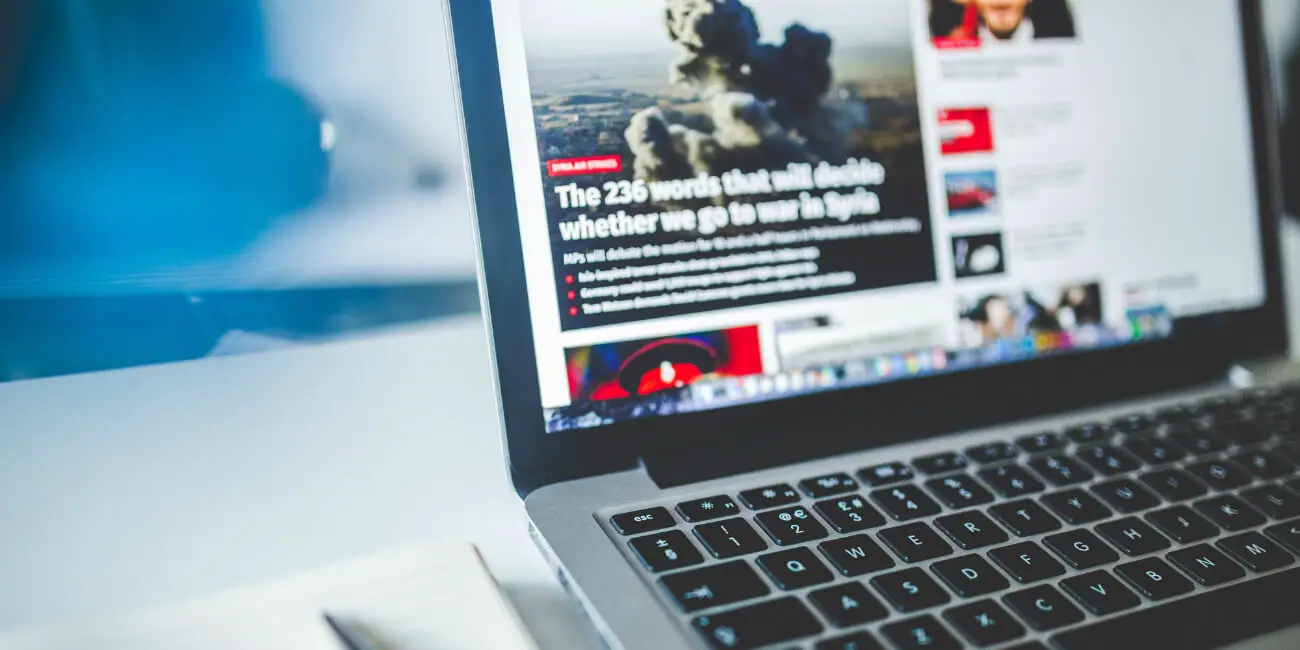
5 tips for how to avoid media bias and fake news online
In our current political landscape, it can be difficult to sort the good news from the bad, the fact-based news sources from those with an undercover, biased agenda..
Concerns of biased news publications have been a point of conversation since the dawn of the internet, but these concerns really began to escalate during the era of the Trump administration (shocker). Trumps Twitter account for example, riddled with personalized posts from Trump himself, is a very clear example of political and publishing powers ability to disseminate inaccurate information. The question is asked now more than ever- how do we know if what we’re reading is fact, or fiction? To help answer that question, here are 5 tips avoiding media bias and fake news, online:
1. Use technology to filter out the media bias
Technology is getting better and smarter at empowering users to make informed decisions online. Browser extensions, softwares, even some digital hardwares focused on security can protect users from making uninformed mistakes and, in our case, assumptions about media. Nobias for example, is a browser extension that has a mission of enlightening users of possible bias on news articles they are considering reading. Nobias enables readers to evaluate bias on political, health and financial related news. While Nobias Political is free, the other two bias reviews require paid membership. After adding the browser extension, users simply hover over the paw print icon next to a search engine results page (SERP) listing, and Nobias will display a popup of the following information:
- Political slant (does the article content lean to the left or right and if so, by how much?)
- Credibility (how reputable is the site? the author?)
- Readability (how long is the reading expected to take you? Usually in minute-value)
Nobias also gives you the ability to see reports about your bias habits (which bias type you’ve been inclined to read more of: left or right), as well as your credibility report (how credible are the websites you’ve been inclined to visit), so you can then make an informed decision about your media browsing habits. Often times, simply knowing that there’s a bias is enough of a tip to make us wary and less likely to digest information, blindly. Technology tools like Nobias can be implemented quickly to control the types of news we’re reading online.
2. Do the story and headline match?
In many cases, the authors and reporters involved with a publication do not come up with their own titles. Instead, titles are decided by lead editors from the publications management. This is done for a variety of reasons, the most common being for SEO optimization, which determines how well the publication is received and indexed by the search engines (SERPs) for better organic ranking. Additionally, online readers have a tendency of skimming titles and deriving understanding from just that alone, so publications word their titles in ways that catch people’s attention and cause them to want to click and read more. In other cases, if a publication is truly biased, titles are specifically created to support particular agendas, knowing that many readers won’t take the time to read through the entire article and will instead, settle on the pseudo-facts in the title.
3. Evaluate fairness of party representation
One of the most obvious signs of biased news coverage is the lack of adequate mentioning of the opposing party or, in some cases, only focusing on the negative attributions of the opposing party. When discussing non-bias, we have to understand that each party has justified reasons for why they stand for a particular cause or have made certain decisions that differ from decisions of others. Failure to adequately point out the reasoning or backstory of an opposing party is a sign of bias on the publications side. Publications that are written to point out flaws in a particular concept or idea are also, by nature, biased.
4. Count the number of corporate/government sources
Any qualified publication will have an extensive list of sources where they gather their information from. If a publication only lists resources that are owned by governments or corporations, there’s a good chance there will be bias. On the other hand, if the sources are balanced with an equal amount of minority voice, progressive, or any other ‘public interest’ groups, there’s a better chance of the publication being fair and unbiased. Most of the time, sources are located at the bottom of an article and in the footnotes.
5. Read multiple sources and challenge assumptions
It’s a no-brainer that relying on one media source for information (especially information that is relevant to you) is a slippery slope to being misinformed. To get a truly unbiased understanding of a particular subject, you need to hear multiple sides of the conversation. Furthermore, pay attention to the assumptions that are being made in a publication, assumptions that aren’t supported by primary evidence. Writers and reporters are people too, they might not realize nor challenge their own assumed beliefs.
In general, bias in the news and media online is close to unavoidable, there are simply too many places to get bad information from. Instead, we can become proactive and aware of the content we’re reading, and use that mindset to scrub through multiple, quality sources and derive understandings of our own.
If you found this Mod helpful, you might also like to learn more about fake reviews on Amazon. Please consider sharing this Mod with your network using the social media icons below. Any comments or questions? Let us know on Twitter!

